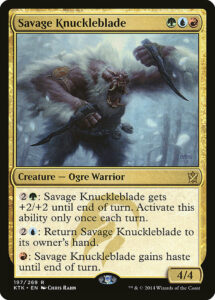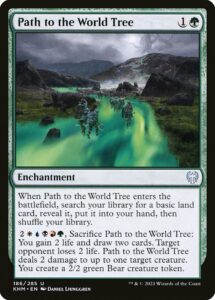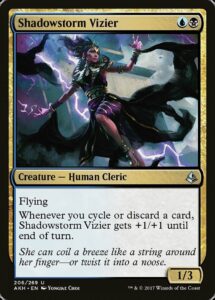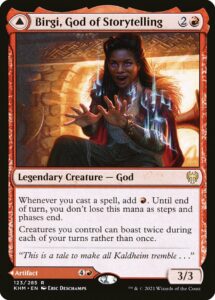I can’t tell if I love Strixhaven, like it, or dislike it. In fact, the same could be said of every premier expansion for the past year. They’ve all had incredibly sweet things you could do, but each left me wanting.
Today, I’d like to break down why these formats are sweet, what that even means, and why that might not correlate with a format being good.
First things first
I acknowledge that the past year has hardly been a normal one. The global pandemic drastically changed how I engage with Magic and cast a pall over the year. Part of the reason that I’m unsure of whether I’d call Ikoria, Zendikar Rising, Kaldheim, and Strixhaven solid Limited formats is due to not being able to draft with friends, play or my local game store, or compete in events. But my misgivings preceded the pandemic. Wizards subtly shifted how it crafts sets with the likely aims of providing more discovery and variety in Limited. I disliked their method but acknowledged that with the right framework, it could be absolutely brilliant. Somewhere along the way last year, Wizards made another change: they aimed to make sweeter formats. So, what does that mean?
Je ne sais quoi
I don’t think there’s an easy or universal way to define what it means for a particular format to be sweet. To give it my best shot: a format is sweet when it enables you to feel like you’re getting away with something. This could be due to a high quantity of powerful cards (Kaldheim and M21’s commons), a novel mechanic (Lessons in Strixhaven, Mutate in Ikoria, MDFC lands in Zendikar Rising), a unique expression of a mechanic (Cycling in Ikoria, mill and tribal lifegain in Zendikar Rising), the ability to grossly stretch your manabase (Kaldheim), or something so wild it feels like cheating (Companions in Ikoria, Planeswalkers in War of the Spark, Strixhaven’s Mystical Archives). However one defines sweetness, I imagine a fair number of people would apply that descriptor to most, if not all of the past year’s sets.
And I would, too! I absolutely loved playing five color snow in Kaldheim. I don’t think I’ll ever forget the thrill of figuring out the 13 land Cycling deck in Ikoria before most of the world did, or how busted it felt to have a Companion. Lessons may well be one of my favorite mechanics ever for how they create additional deck slots and meaningful draft picks (while also making for a better Best of 1 experience). I had a blast drafting Frantic Inventory in Magic 2021 despite generally disliking Core Sets, and Zendikar Rising’s Rogues mashed two anti-synergistic strategies (mill and aggro) into something absolutely thrilling.
So, if I loved it so much, where’s the problem?
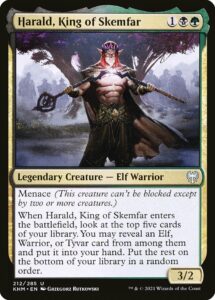 The Problem
The Problem
While every set of the past year had awesome things to do, it felt like the fun was distributed in dense clumps. There were really sweet (and powerful) archetypes that I could play over and over again, the aggro deck preyed upon them (sometimes successfully), and then a slew of underperforming and underpowered options. The few options were generally awesome to play, but there were ultimately only a few options.
Let’s start with Kaldheim. I loved drafting multicolor snow, appreciated the unconventional white aggro decks, and enjoyed seeing the meme deck of Colossal Plow manage to do work. But decks like BG elves, RB sacrifice, WU Foretell, WB second spell, GW go-wide, and UB snow felt like they were missing a few crucial cards that got cut in development. In my mind, the format devolved into just three archetypes: G/x snow, UR giants, and white aggro—with most other options being traps doomed to fail the majority of the time (even when wide open).
One can easily argue that every format is defined by best archetypes and best colors. Even beloved formats had deep imbalances (red in Innistrad was by far the weakest color) or trap archetypes (WB Historic in Dominaria was all over the place). I concede those points, but that doesn’t mean there aren’t structural issues at hand.
For me, Kaldheim isn’t an outlier—all the last year’s premier sets coalesced into a small handful of archetypes. Ikoria boiled down to four macro-archetypes: RWu Cycling, BGU Mutate, WB Humans, and having a Companion. Things like flying-matters, human+non-human-matters, and reanimator were little textures you’d add to one of these archetypes, not strategies that could stand on their own.
I still enjoy Strixhaven, but it too boils down to a cluster of just three strategies: blue value decks (Quandrix and Prismari have similar game plans and only somewhat differing play patterns), Silverquill aggro decks, and black value decks. Witherbloom’s strategies are fairly diffuse and Lorehold’s are so hard to enable that the color pair hardly functions. Zendikar Rising had the most varied archetypes of the year, but if you weren’t in UB Rogues, WB Clerics, or GU Kicker (the three focused and powerful color pairs), you struggled with how Party divided what non-green color pairs valued or how green color pairs had too little support to function.
So what?
I don’t expect everyone to agree with me—frankly, I expect mine to be very much a minority position. But hopefully this communicates the awkwardness I feel about the past year’s sets. I’ve had a boatload of fun with them, but I’ve generally been playing with and against the same card clusters throughout each format.
Every set has offered sweet gameplay, but suffered from a dearth of distinct, fully supported archetypes. The causes seem straightforward to me—commons are stronger (which makes synergy less important), there are more micro-synergies between individual cards (which leads to fewer archetypes and more packages of cards that fit in a variety of decks), and there are fewer broad synergies (so there’s less gluing together different color pairs). Whichever color happens to get the strongest cards tends to have abnormally strong synergies, but the other colors struggle to compensate because their synergies can’t compete. And so the format coalesces into a small number of powerful decks.
The ultimate question isn’t how to change this paradigm, but whether it’s a problem at all. Sure, I think Kaldheim would’ve been better if it decided whether to commit to or abandon being a tribal set, but I nevertheless had a ton of fun using Mistwalker to randomly enable a slew of interactions. I wish that Lorehold had an easier and more coherent strategy, but I can’t help but laud praise on how the Mystical Archive adds so much variety to Strixhaven games (despite not adding any new archetypes).
The past year provides multiple lessons for making more balanced sets, yet also enjoyed unprecedented success in consistently creating sweet formats. I have complaints, but I also had a ton of fun throughout dozens of drafts of each format because they were so sweet. I think there is a point at which a format can have incredible interactions yet suffer from such imbalance that the sweetness is overtaken by bitterness, but we didn’t get there this year. At the end of the day, I had a lot of fun, and that means that Wizards of the Coast was successful—I just think it’d be even better if they found a way to raise all color’s ships a bit more.
And, as always, thanks for reading.
Zachary Barash is a New York City-based game designer and the commissioner of Team Draft League. He designs for Kingdom Death: Monster, has a Game Design MFA from the NYU Game Center, and does freelance game design. When the stars align, he streams Magic (but the stars align way less often than he’d like).

